Uncork Decorative Potential with Digital Hybrid
The Wine and Spirits Industry is growing fast and isn’t expected to slow down. According to the Beverage Information Group, wine consumption has continued to rise year after year since 1998. That being said, millennials are accounting for a large percentage of consumers within the wine market.
In 2015 alone it was reported that millennials accounted for 36% of total wine drinkers overall. This means wine labels are trending away from classic design elements and moving ahead toward a more youthful approach. Millennial wine consumers don’t necessarily care about the “stats” of the wine itself and instead, purchase decisions are made with regard to label design.
What’s Trending?
With market focus switching to a younger demographic, we’re seeing label and packaging appearance shift away from distinguished looks. Brands are enhancing their packaging with designs that really don’t look like the conventional wine label at all. This particular type of label features minimal information regarding the wine itself and is instead embellished with images, often digitally printed, that are meant to provoke thought and spark conversation. Totally tame or wildly innate, these bottles draw consumers to the shelves with vivid color and intricate design elements.
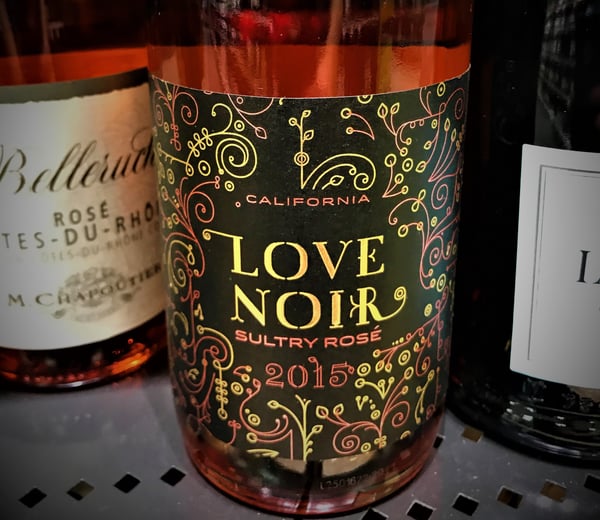
While traditional graphics dominated store shelves in the past, a new wave of labels focused on typography is also emerging. These veer from classic aesthetic and incorporate more creative fonts. Labels centered around typography combine the subtle use of color and imagery with bold, confident typeface to tell a story and invoke a need to purchase. Typographical designs are a twist on vintage approaches and resonate well with consumers.
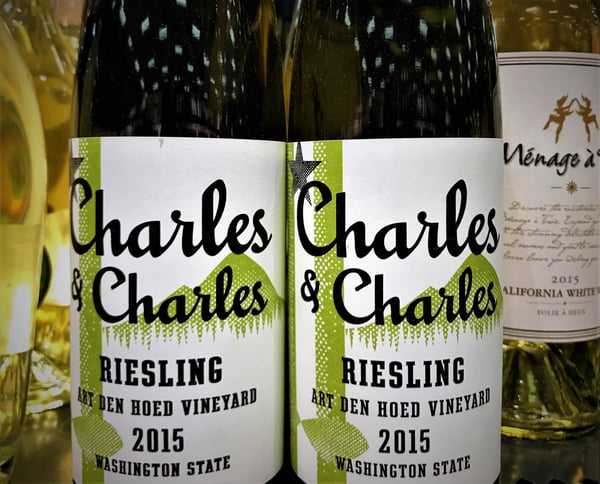
How Can I Use This Info?
As a printer, you may believe that what is trending in the market isn’t relevant to your business. That fact couldn’t be further than the truth, however. Business-savvy converters leverage knowledge of these emerging labelling trends to create a viable, profitable business within that market segment. How can that be done? It’s simple, really. Taking advantage of digital hybrid technology is a start. Educating your customers on the value of specialty decoration is how you finish.
Use of PS (pressure sensitive) labels is a great way to transform current market trends into revenue for converters. PS labels are self-adhesive, compatible with almost any container material, shape, and product type, allowing for simple label application. However, simply using basic design elements incorporated with pressure sensitive labelling doesn’t mean higher profits. Decorative elements are what truly elevate a brand’s label design. Adding decorative elements elevates sophistication and can ignite the buyer’s senses. Specially decorated labels are purchased at a higher rate than their bland counterparts by attracting customers through attention grabbing visual cues.
Digital hybrid solutions like Mark Andy Digital Series are a step in the right direction for printing high-quality PS labels along with a broad color spectrum, versatile decorative options, and intricate design elements. Merging the speed of flexo with the quality of digital will result in beautifully crafted labels well within the scope of your clients needs.
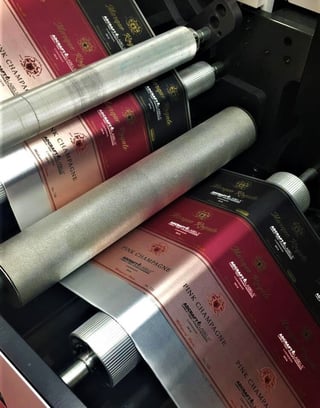 Champagne labels printed by Adcraft Labels on Mark Andy Digital Series
Champagne labels printed by Adcraft Labels on Mark Andy Digital Series
What Are My Options?
The available options of decorative label applications are almost endless. Listed below are just some of the decorative abilities possible when utilizing digital hybrid technology to produce eye-catching wine labels for your customers.
Specialty Cold Foils
Cold foils are applied to heat-sensitive substrates to accomplish a metallic, shiny, or lustrous finish. Cold foil stamping is ideal to achieving a metallic look when hot foil is not possible (for example, when using temperature-sensitive substrates like plastic films). Cold foils come in a broad range of colors and give a premium look to your label.
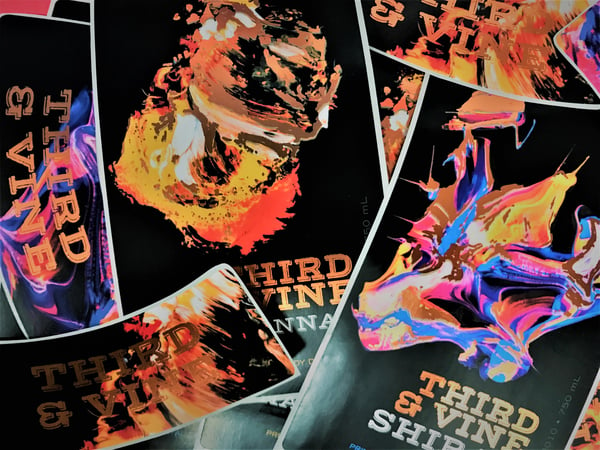
Textured Stock
Dappled, micro-textured, felt, linen, and vellum make beautiful labels perfect for impressing key demographics in the wine & spirits industry. Not to mention, textured stock handles embossing, foil, and stamping extremely well, adding another element of specialty decoration to your label design.
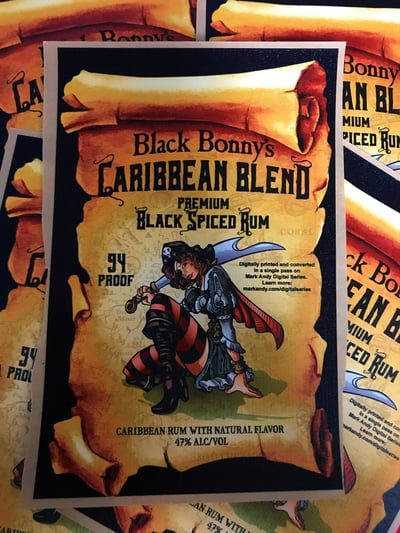
Intricate Die Cuts
This fits well within what’s popular in the wine market. Unique designs and oddly shaped labels attract customers to the shelves and create a level of interest that traditional wine labels cannot compete with. Using different die-cuts and hybrids, you can achieve decorative effects inline without the cost of specialty finishes and offline finishing.
Varnishes
Varnishes such as spot or flood varnishes can be used to give your label an expensive look without expensive production costs. Spot varnishing is where a varnish is applied to only part of the material where flood varnishing applies the finish to the entire thing. Both are great options to increase the value of your label. Adding a varnish over your label presents several design advantages. Gloss, matte, and satin varnishes add a lush, tactile feel to your label, enticing customers through touch.
Laminates
Lamination is another element that adds value to your label. Matte laminations are huge in the beer scene, and the same can apply to trending new-age wine labels. Matte laminations are cost effective and soften the look of your label creating an expensive look at a minimal expense to converters.
Final Thoughts
Converters with clients in the wine & spirits industry have a great opportunity to leverage business from emerging trends in labelling. While converters are recognizing the need for hybrid technology to keep up with the needs of their customers, they may not be aware of how accessible specialty decoration is. Selling the decorative benefits of their hybrid equipment is a great way for converters to increase profit and stay on-trend in an ever changing market. Adding decorative elements to each label keeps customers happy because they are able to produce premium labels perfect for new trends emerging in this industry and increase overall revenue. Are you ready for the next generation of printing?